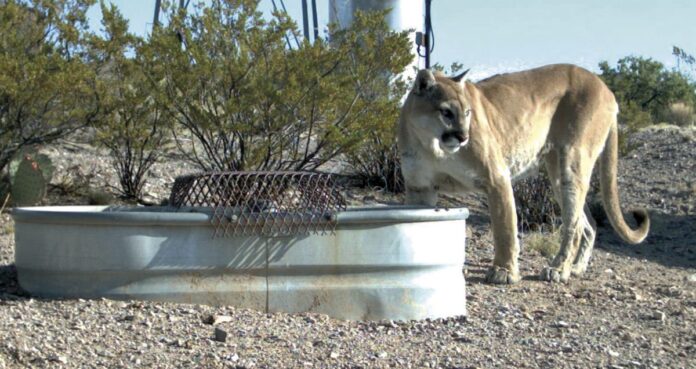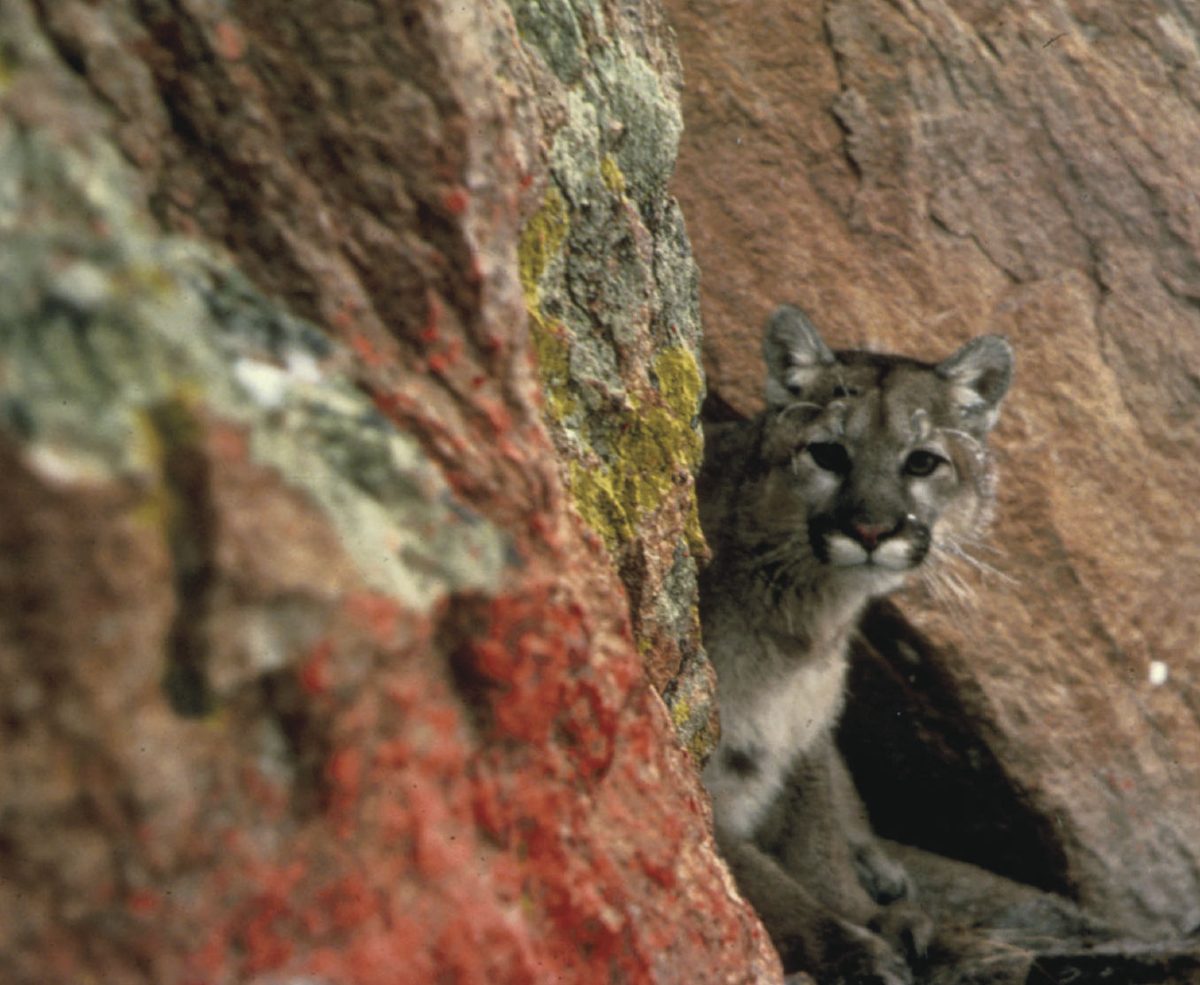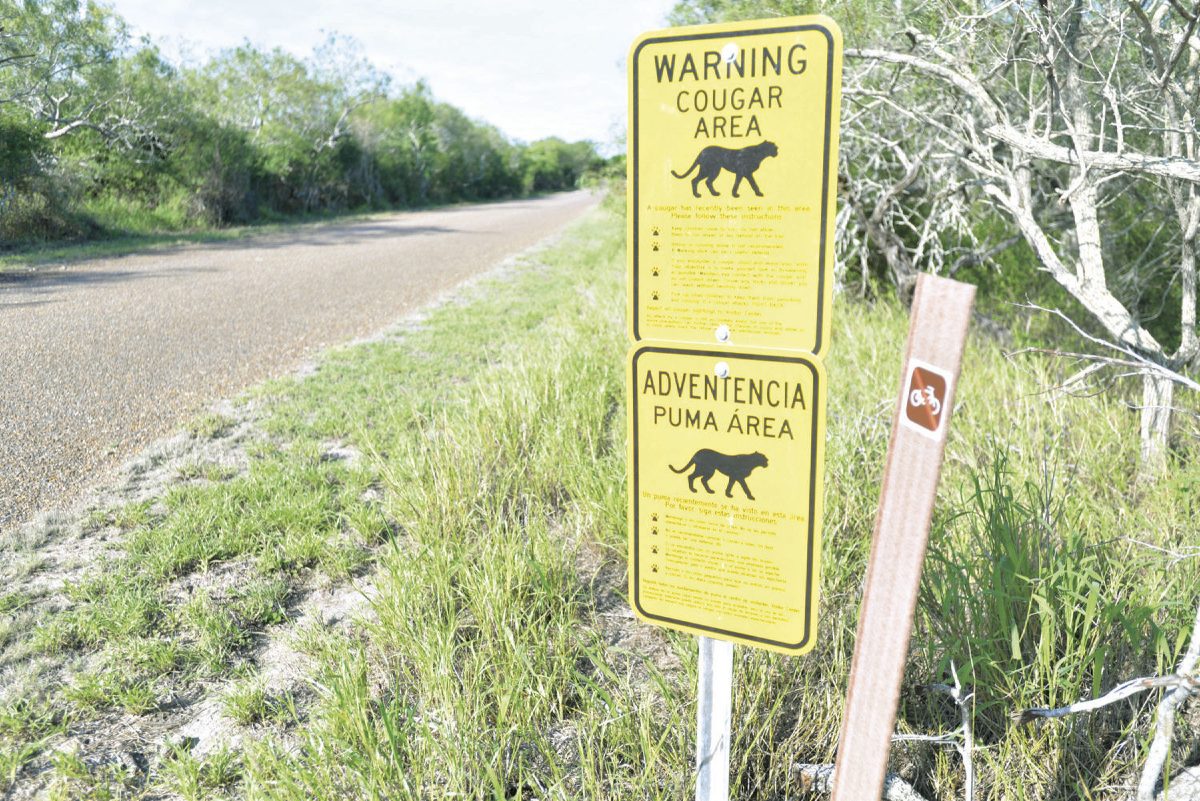LOS FRESNOS — A bright yellow cautionary tale sits beside a birding trail that winds through the mesquite trees at Laguna Atascosa National Wildlife Refuge.
The sign, in English and Spanish, reads “Warning Cougar Area.”
Whether that is accurate on any given day is problematic, because refuge officials and others think mountain lions are inside Laguna Atascosa periodically but not necessarily on a permanent basis.
“I think it kind of raises alarm when it doesn’t need to be raised,” said Boyd Blihovde, the refuge manager, who says he inherited the warning signs when he arrived several years ago and has considered removing them. “But I feel like if we take them down, that’s when something will happen.”
The signs may be artifacts from a previous administration, but there have been recent mountain lion sightings at the refuge.
“This past year we have had very credible sightings from at least two people,” Blihovde said. “One’s a volunteer who’s been working here many, many years, and they actually watched one for quite a while” through a spotting scope.
“The other one was a biker who saw one twice,” he added. “That was on Bayside Loop which is popular for biking right now.”
Once practically extirpated as livestock predators east of the Rocky Mountains, there are an estimated 30,000 mountain lions in the United States today. And like the Texas population, the lions are migrating eastward.
Credible mountain lion sightings have been made in at least a dozen Midwestern states, including Minnesota, Wisconsin and Michigan, as well as Arkansas and Louisiana. Florida, of course, has a small remnant population in the Everglades.
The Texas Parks and Wildlife Department says the big cats are found throughout the Trans-Pecos area, as well as the brush lands of South Texas and portions of the Hill Country. State biologists say mountain lions now occur in more counties than they did 10 years ago and are expanding their range west to east.
For the rest of this story and many other EXTRAS, go to our premium site, www.MyValleyStar.com.
Subscribe to it for only $6.99 per month or purchase a print subscription and receive the online version free, which includes an electronic version of the full newspaper and extra photo galleries, links and other information you can’t find anywhere else.
LENGTH — 3-4 feet; tail is 2.5 to 3 feet
WEIGHT — 70 to 170 pounds
DESCRIPTION — A large, slender cat with a smallish head and noticeably long tail. Fur is a light, tawny brown color which can appear gray or almost black, depending on light
conditions. Contrary to popular belief, there are no black panthers in North America. Mountain lions are also called cougars, pumas, panthers, painters and catamounts.
BEHAVIOR — Secretive animals, they prey on a variety of animals, including deer, wild hogs, javelina, rabbits, jackrabbits and rodents. Some lions occasionally kill livestock or dogs.
DISTRIBUTION — Mountain lions generally are found in remote mountains, canyonlands, or hilly areas with good cover. It has the widest distribution of any wild cat, from Canada to South America. In Texas, the mountain lion is found throughout the Trans-Pecos, as well as the brush lands of South Texas and portions of the Hill Country. Sightings and kill reports — mountain lions can be hunted legally in Texas — indicate they are expanding their range to the east.







